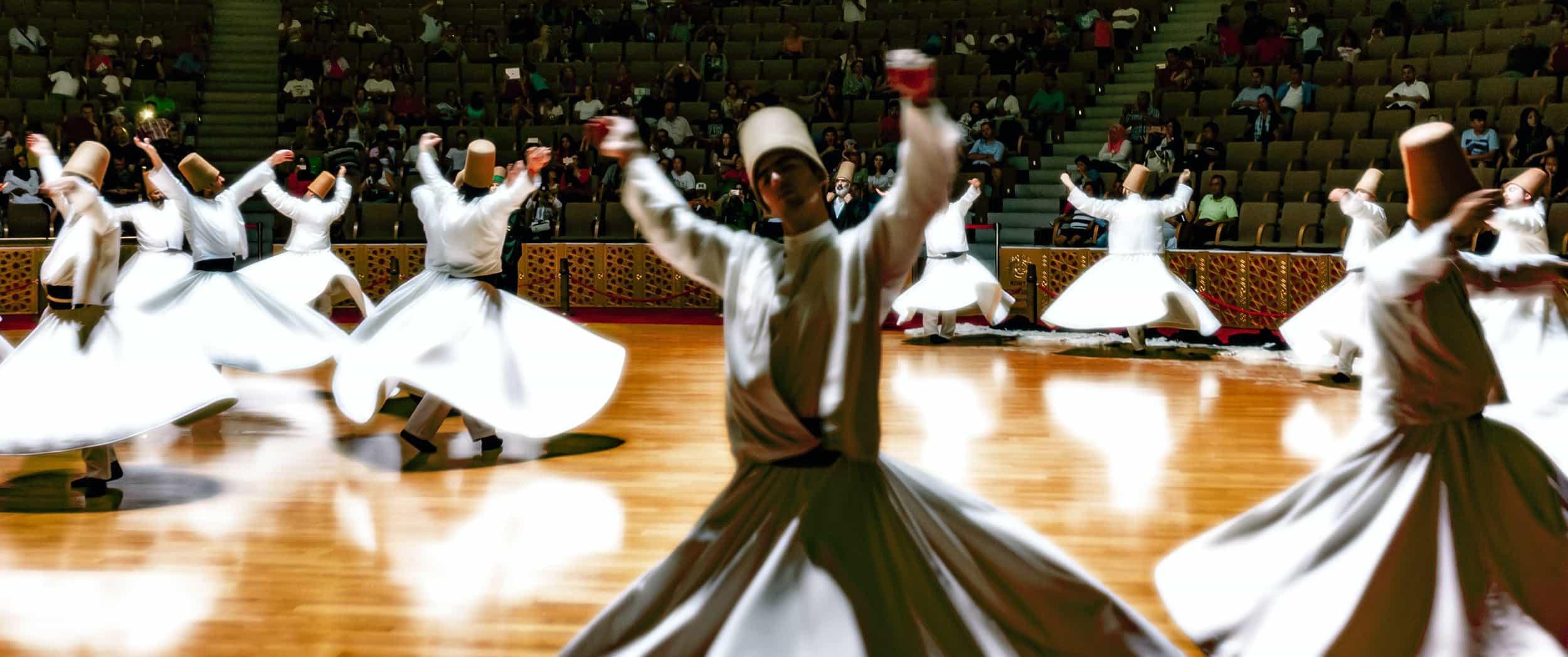Experiencing traditional Sufi music and dance can be a profound and mesmerizing encounter. Sufism is a mystical Islamic belief system that emphasizes the inward search for God and spiritual closeness. Sufi music and dance are powerful expressions of this devotion, and they are often performed in the context of Sufi gatherings known as “Sama” or “Dhikr.”
1. Whirling Dervishes:
One of the most iconic forms of Sufi dance is the whirling performed by the Mevlevi Order, also known as the Whirling Dervishes. This dance is a spiritual practice that symbolizes the soul’s journey toward God. The dancers, dressed in long, flowing white robes, spin in repetitive, rhythmic motions, symbolizing spiritual ascent and unity with the divine.
2. Qawwali Music:
Qawwali is a form of Sufi devotional music that originated in South Asia. Typically performed in groups, Qawwali involves a lead vocalist, clapping, harmonium, and tabla players. The lyrics often revolve around themes of love, spirituality, and the teachings of Sufi saints. The music has a distinct rhythm and melody that can induce a trance-like state, promoting spiritual reflection and connection.
3. Ney (Flute) Performances:
The ney, a traditional Sufi flute, is often used in Sufi music to create hauntingly beautiful melodies. The sound of the ney is believed to have a spiritual quality, and its music is used to enhance the meditative atmosphere during Sufi gatherings.
4. Dhikr:
Dhikr, or the remembrance of God, is a fundamental practice in Sufism. It involves the repetition of sacred phrases or names of God. Sometimes, rhythmic movements, clapping, and chanting are integrated into the Dhikr practice, creating a communal experience that fosters a sense of spiritual unity.
5. Sufi Poetry:
Sufi music often incorporates poetry, known as Sufi poetry, which explores themes of divine love, longing, and the spiritual journey. The lyrics, sung with deep emotion, contribute to the overall emotional and contemplative atmosphere of the performance.
6. Traditional Instruments:
Various traditional instruments, such as the oud, sitar, tabla, and dholak, are commonly used in Sufi music to create a rich and diverse sonic palette. These instruments add depth to the music and contribute to the overall immersive experience.
7. Spiritual Atmosphere:
Sufi music and dance are not just performances; they are spiritual practices aimed at connecting with the divine. The atmosphere in Sufi gatherings is often charged with a sense of devotion, mysticism, and unity among the participants.
Where to Witness Sufi Music and Dance in Egypt
There are many places in Egypt where you can witness Sufi music and dance. Some of the most popular places include:
- The Tanoura Dance Troupe: This troupe is based in Cairo, and they perform regularly at the Egyptian Opera House.
- The Sufi Whirling Dervishes: This group of dervishes performs regularly at the Al-Azhar Mosque in Cairo.
- The Moulid of Sayyid Abu al-Hasan al-Shadhili: This is an annual festival that takes place in Luxor, and it features a variety of performances of Sufi music and dance.
Overall, witnessing traditional Sufi music and dance can be a transformative experience, offering a glimpse into the spiritual and artistic richness of Sufi traditions. The performances not only entertain but also have the power to evoke a deep sense of contemplation and connection with the divine.



Comment (0)